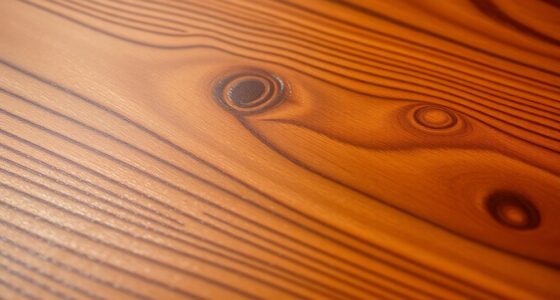Yes, you should wet window clings for easier application and better adhesion. Lightly mist the clean glass surface before placing the cling. This method allows for easy repositioning to get it just right. Be sure your surface is free from dirt and grease, as a clean surface guarantees ideal results. After applying, smooth out any air bubbles with a credit card or squeegee. It's also essential to allow 24 hours for the cling to fully adhere. Want to know more tips for a flawless installation? There's plenty more to explore to get the best out of your window clings!
Key Takeaways
- Wet application can make positioning easier, allowing for adjustments before final adhesion of the window cling.
- Lightly mist the surface with water before placing the cling for better maneuverability.
- Use a squeegee or credit card to smooth out air bubbles during wet application for even pressure.
- Ensure the glass surface is clean and free of oils for optimal adhesion, regardless of the application method.
- Follow the manufacturer's instructions, as some clings may not require wet application for best results.
Understanding Window Clings

Window clings are a versatile way to enhance your glass surfaces without the hassle of sticky residue. These adhesive decorations stick to glass without leaving a mess behind, making them perfect for both temporary and permanent displays. You'll find two main types: clear clings offer subtle branding, while opaque clings provide bolder visibility. Typically made from durable vinyl or polyester, they come in various designs, including custom prints. To guarantee the best adhesion, clean your surface thoroughly and check that it's free of oils or grease. For optimal results, it's best to install clings when the temperature is within the optimal installation temperature range of 40-90°F.
Benefits of Wet Application

When you choose wet application for your window clings, you unfasten a range of benefits that make installation smoother and more effective.
This method allows for easy repositioning, giving you the flexibility to adjust the graphic until it's just right. The application fluid acts as a lubricant, reducing the risk of damage if the cling touches the surface before you set it in place.
You'll also achieve a bubble-free finish, essential for clear films, as the fluid helps remove trapped air bubbles. Enhanced adhesion means your clings bond strongly to the glass, potentially lasting up to two years. Additionally, the use of air release channels in some materials can further minimize the risk of bubbles during installation.
Plus, wet application is ideal for complex designs and larger windows, ensuring a professional-quality installation every time.
Preparing the Surface

Preparing the surface for your window clings is essential to achieving a flawless installation. Start by ensuring the area is free of dirt, dust, and grease. Use a multi-purpose cleaner to eliminate any contaminants, then rinse the surface with clean, warm water. Dry it thoroughly with a lint-free cloth to prevent residue. If you're working with metal or painted surfaces, check manufacturer specifications for any solvent requirements. For plastics with release agents, pre-wipe with mineral spirits or isopropyl alcohol. Make sure the application surface and environment are at least 40°F for ideal adhesion. Once everything's clean and dry, you're ready to apply your window clings without worries about peeling or bubbling. Remember, a clean surface is crucial for ensuring proper adhesion, as it allows the static cling to work effectively.
Cleaning Your Window

After ensuring your surface is clean and ready for window clings, the next step is to address the windows themselves.
Start by using a small broom or vacuum to remove dust, cobwebs, and insects from the frames and sills.
Wipe plastic or vinyl frames with cleaning wipes, but avoid spraying cleaners directly on them; instead, apply the product to a cloth.
For the glass, use a traditional glass cleaner or a mix of ammonia and water. Regular maintenance helps to prevent buildup of dust on the glass, ensuring a clearer view. Consistent maintenance of your surroundings can enhance air quality, as regular cleaning helps reduce allergens and particulates.
Wet a sponge with your chosen solution and clean the glass, rinsing with a damp cloth afterward.
Finally, dry the glass with a clean cloth or squeegee, ensuring a streak-free finish.
Pay attention to edges and corners for thorough cleaning.
Applying the Window Cling

To achieve a flawless application of your window cling, start by ensuring the glass surface is clean and ready for the cling. Use a microfiber cloth or glass cleaner to remove any dust or grime. Regular cleaning extends the lifespan of window clings and improves the overall look of decorations, making a clean surface essential for optimal adhesion.
Next, measure the placement using washable markers or painter's tape to keep it centered and aligned. Carefully peel off the protective backing without bending it.
If you're using a wet application method, lightly mist the surface with water or a soapy mixture. Position the cling, then press the upper corners in place.
For a dry application, place it directly, smoothing out air bubbles with a credit card.
Finally, check the alignment before wiping away any excess moisture for a seamless finish.
Techniques for Bubble Removal

Removing air bubbles from your window cling is essential for achieving a professional look. Start with a clean, dry surface to avoid any contaminants that could interfere with adhesion.
Use a flat edge, like a credit card, to smooth bubbles from the center out when applying the cling. If you encounter stubborn bubbles, gently puncture them with a pin and press the air out through the hole.
Alternatively, apply gentle heat with a hair dryer to soften the vinyl, making it easier to stretch and manipulate. This is especially helpful around curves and edges to ensure a smooth application. Be patient and work slowly, inspecting your cling afterward for any remaining bubbles.
Address them promptly to guarantee your installation looks flawless and polished.
Finalizing the Installation

Finalize your window cling installation with careful attention to detail.
Start by wiping away any water residue using a lint-free cloth after smoothing the cling. Step back and check the alignment; verify it's level and positioned as you want. Make any adjustments before locking it in place.
Allow drying time—24 hours is ideal—for the cling to adhere securely to the glass. Conduct a final inspection to confirm the cling is free of air bubbles or wrinkles. Ensure the glass surface is smooth and intact to achieve optimal adhesion.
If needed, clean the glass with a suitable cleaner and lint-free cloth after removing the cling.
This meticulous approach will guarantee your window cling looks great and lasts longer, providing an appealing display for all to see.
Additional Tips for Success

After ensuring your window cling is properly installed and free of imperfections, a few additional tips can help enhance your success.
First, make sure the glass surface is clean and dry, avoiding any solvent-based cleaners. Aim to install your cling when temperatures are between 40-90°F for the best adhesion.
Consider using a soapy water mixture to assist with repositioning the cling during application. Carefully peel the protective backing and align the cling before pressing it down, starting from the center. Additionally, remember that creating a DIY stained glass effect using window clings can add a unique decorative touch to your space.
Use a squeegee to push out air bubbles and smooth any wrinkles. Finally, let the cling settle undisturbed for a few hours before checking its adhesion and cleaning the glass to remove smudges.
Common Mistakes to Avoid

Avoiding common mistakes is essential for achieving a flawless window cling installation. First, confirm you're working within the recommended temperature range of 40-90°F; extreme temperatures can hinder adhesion. Additionally, be aware that insufficient cleaning of glass can lead to poor bonding, which affects the cling's performance. Regular cleaning also supports a healthier lifestyle, as it promotes cleanliness and hygiene in your environment. Next, thoroughly clean the surface to remove dust and grime, avoiding ammonia-based cleaners that can damage the adhesive. When applying the cling, smooth out air bubbles effectively; using too much application fluid or incorrect techniques can trap moisture and lead to complications. Finally, store your clings properly—avoid rolling them and keep them in cool, dust-free containers to maintain their integrity.
Frequently Asked Questions
Can I Reuse Window Clings After Removing Them?
Yes, you can reuse window clings after removing them.
To guarantee they stick well, clean them with a soft cloth and mild soap, then let them dry completely.
Store them flat to avoid creases, and keep them in a clean environment.
When you're ready to reapply, clean the window thoroughly and consider lightly misting the glass with water mixed with soap.
This will help the cling adhere better, giving you a smooth finish.
What Materials Are Window Clings Made From?
Window clings are primarily made from polyvinyl chloride (PVC), a flexible and durable material.
You'll find them typically in a 7 mil thickness, which allows for good adhesion on smooth surfaces like glass. The vinyl coating gives them their static cling properties, eliminating the need for adhesives.
They can be printed or die-cut into various shapes, making them versatile for decorations.
With proper care, they can last for years both indoors and outdoors.
How Long Do Window Clings Typically Last?
Window clings typically last around 3 to 5 years when you install and care for them properly.
If you choose high-quality materials, they can last even longer—up to 10 years for non-metallized films and up to 25 years for metallized ones.
Keep in mind that environmental conditions, surface cleanliness, and maintenance frequency all play a role in determining their lifespan.
Regular inspections and gentle cleaning will help you maximize their durability.
Are Window Clings Safe for Tinted Windows?
Yes, window clings can be safe for tinted windows, but it depends on how you apply them.
If you stick them on the outside, they won't interfere with the tint. However, applying them from the inside can damage the tint, especially if it's aftermarket.
Always use low-tack adhesive or static clings to avoid issues. Make sure to check your tint type before applying to keep everything in good shape.
Can Window Clings Be Applied to Other Surfaces?
Yes, you can apply window clings to various surfaces beyond just glass. They stick well to smooth plastics, stainless steel, aluminum, and even certain walls, as long as those surfaces are non-porous and clean.
Just make certain the surface is dirt-free and has an even texture for the best adhesion. Applying them in the right temperature range will also help guarantee they stay put and look great.
Conclusion
To sum up, wetting window clings can enhance your installation experience, ensuring a smooth and bubble-free finish. By following the best practices outlined, you'll achieve a professional look that lasts. Remember to prepare your surface, clean your window thoroughly, and apply the cling with care. Avoid common mistakes, and you'll be proud of your work. With these tips in hand, you're ready to transform your space with beautiful window clings that catch the eye!








